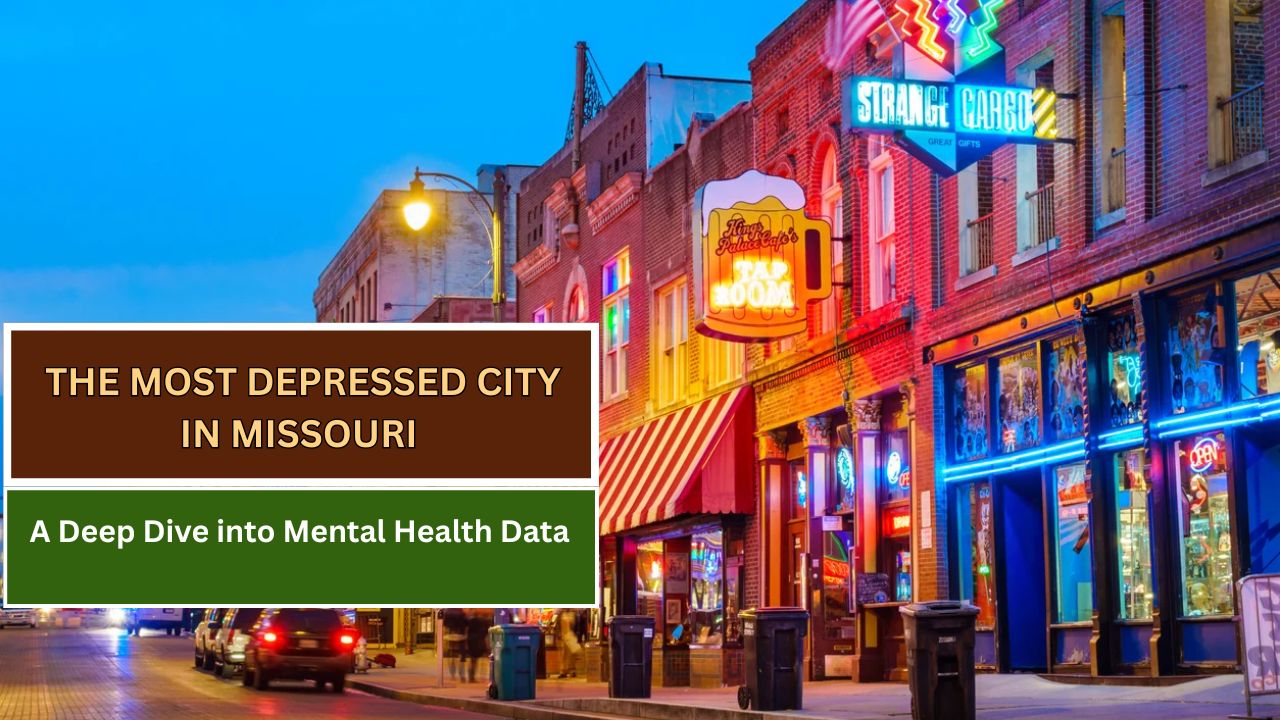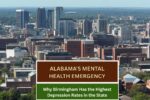Missouri, often known for its rich history, river cities, and midwestern charm, is also facing a quieter but deeply concerning issue: mental health. Among its urban centers, St. Louis stands out not only as a cultural and economic hub—but also as a city grappling with one of the highest rates of depression in the state and across the United States.
The Alarming Numbers Behind Mental Health in St. Louis
According to a 2021 report by the City of St. Louis Department of Health, the city recorded the highest rate of mental health-related emergency room visits in Missouri, particularly among adults aged 25 to 64. This suggests both a high prevalence of mental health conditions and a potential lack of access to consistent outpatient care.
St. Louis is also one of the top U.S. cities for adult depression diagnoses. Data from CEUFast places the St. Louis metropolitan area’s depression prevalence at 22.5%, significantly above the national average.
These numbers are more than statistics—they represent the daily struggles of thousands of residents, many of whom face additional social and economic burdens that exacerbate mental health challenges.
The Role of Poverty and Inequality
Mental health disparities in St. Louis are tightly intertwined with poverty. Residents living in economically disadvantaged zip codes are three times more likely to seek emergency care for mental health issues compared to those in more affluent areas, according to the St. Louis City Health Department.
This reflects a troubling pattern: mental health services are often harder to access in the very communities where they are needed most. With fewer outpatient options, residents turn to emergency departments in crisis—an approach that is not only reactive but also costly and unsustainable.
Racial Disparities in Mental Health Outcomes
The same city report highlights stark racial disparities in mental health care and outcomes. African American residents in St. Louis are significantly more likely to suffer from mood and anxiety disorders compared to their White counterparts, and also face systemic barriers in accessing consistent care.
These disparities mirror broader national trends. A 2021 CDC brief found that social determinants of health, including housing, employment, and education, all contribute to mental health inequities.
Kansas City Is Not Far Behind
Though St. Louis tops the list, Kansas City is also facing significant mental health struggles. Around 21.6% of adults in the Kansas City metropolitan area report being diagnosed with depression.
Kansas City was recently ranked 11th in a nationwide survey of the most stressed cities in America, a metric influenced by crime, financial insecurity, and work-life imbalance.
Youth and College Students Are Not Immune
Missouri’s mental health crisis extends to its younger population. According to the Missouri Department of Mental Health, the rate of major depression among college students in the state rose from 12.9% in 2009 to 32.7% in 2020. This dramatic increase highlights the growing emotional burden on young adults navigating a complex modern world.
Where Do We Go from Here?
Tackling this mental health epidemic requires a multi-pronged approach. Expanding access to outpatient care, investing in community mental health services, addressing poverty, and implementing culturally competent care are all essential.
Efforts are underway. The Missouri Department of Mental Health offers statewide initiatives like crisis hotlines, peer support services, and community-based programs. However, more targeted, localized solutions are urgently needed—especially in cities like St. Louis where the crisis is most acute.
This article has been carefully fact-checked by our editorial team to ensure accuracy and eliminate any misleading information. We are committed to maintaining the highest standards of integrity in our content.

Outside of work, he enjoys playing chess, following cricket, and writing short stories. His commitment to integrity and in-depth analysis strengthens OTE News’ mission of providing trustworthy journalism.




